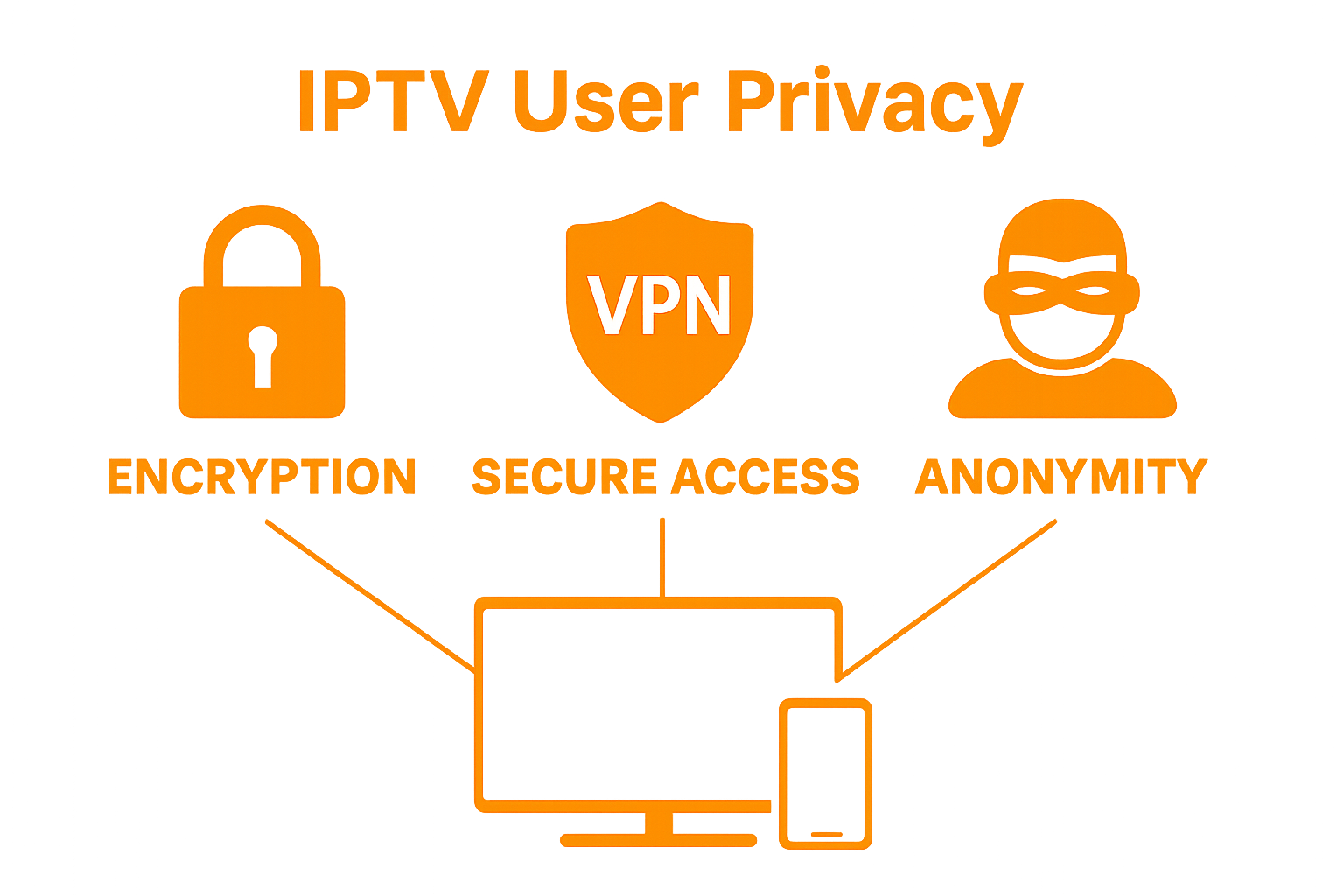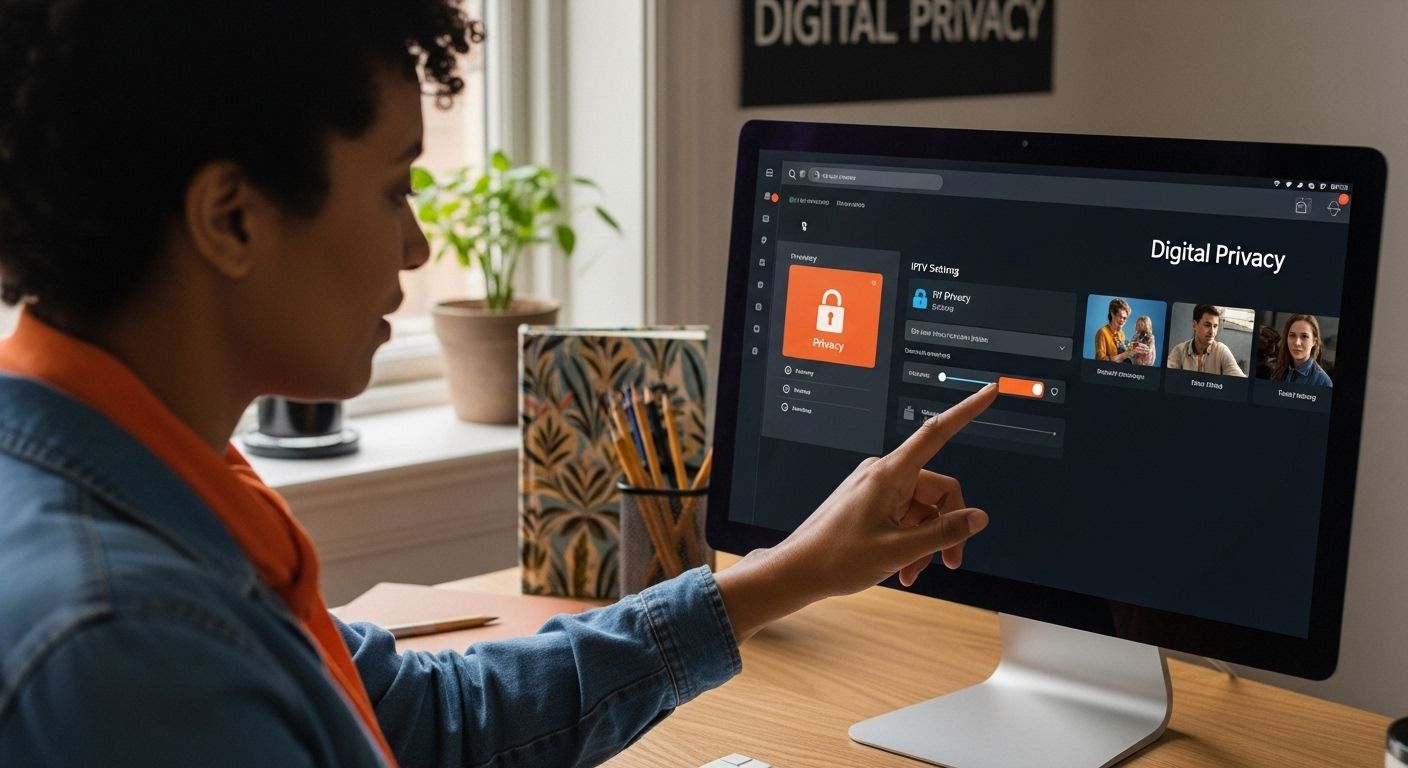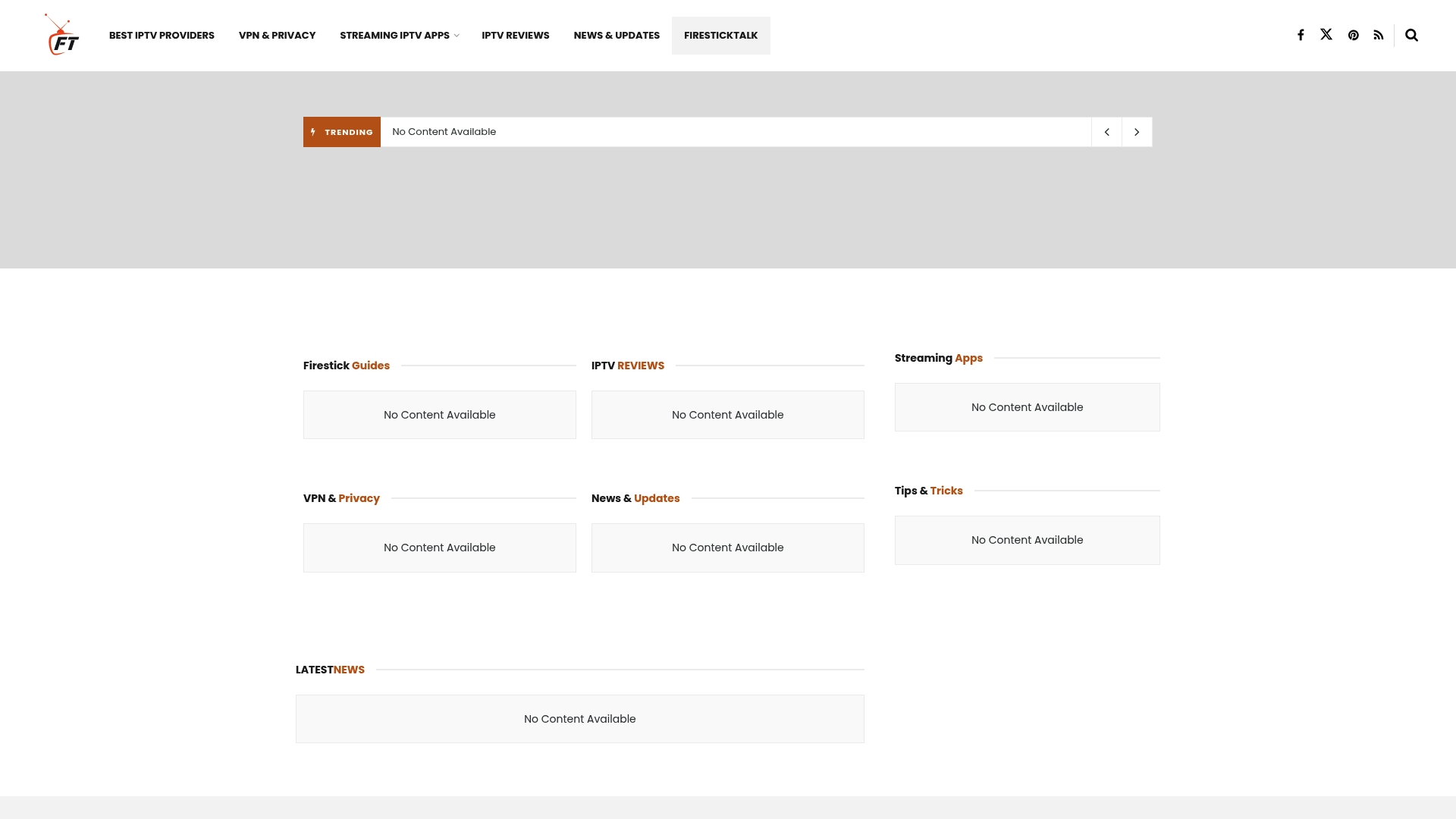IPTV has flipped traditional TV upside down by delivering shows and movies over the internet instead of cable. Even more, IPTV services collect a staggering amount of user data compared to old-school broadcasts. But while the tech feels futuristic, many providers track everything you watch and even where you watch from. Most people think the biggest perk is on-demand streaming. It turns out the real story is about what happens to your personal data behind the scenes.
Table of Contents
- What Is Iptv And Why Is Privacy Important?
- Understanding Privacy Risks In Iptv Streaming
- How Iptv Works: The Connection Between Technology And Privacy
- Key Concepts In Iptv Privacy: Encryption, Anonymity, And Access
- Real-World Implications: Balancing Convenience And Privacy In Iptv
Quick Summary
| Takeaway | Explanation |
|---|---|
| Understand IPTV technology’s data handling | IPTV converts TV signals into digital data, leading to extensive user data collection. |
| Protect your privacy with encryption | Strong encryption protocols are essential to safeguarding user data during IPTV transmission. |
| Be aware of potential data vulnerabilities | IPTV platforms have risks like unauthorized data sharing and cyber tracking threats. |
| Personalization comes with privacy trade-offs | Custom content recommendations in IPTV can lead to detailed tracking of viewing habits. |
| Exercise control over your data | Users should actively manage their privacy settings to limit data collection and sharing. |
What is IPTV and Why is Privacy Important?
Internet Protocol Television (IPTV) represents a revolutionary approach to consuming multimedia content by delivering television programming through internet networks instead of traditional cable or satellite systems. Unlike conventional broadcast methods, IPTV streams media content directly to your device using internet protocols, transforming how viewers access and interact with digital entertainment.
Understanding IPTV Technology
IPTV works by converting television signals into digital data packets transmitted over high-speed internet connections. This technology allows users to access live TV channels, on-demand content, and interactive services through various devices like smart TVs, computers, smartphones, and streaming boxes. Explore our detailed IPTV privacy guide to understand the intricate mechanisms behind this streaming technology.
Key characteristics of IPTV include:
- Ability to stream content in real-time
- Personalized viewing experiences
- Multiscreen compatibility
- Advanced content management features
Privacy Concerns in IPTV Ecosystems
Privacy becomes paramount in IPTV environments because these services collect extensive user data. According to research on digital broadcasting technologies, IPTV providers often track viewing habits, device information, geographic location, and interaction patterns. This data collection raises significant privacy risks, potentially exposing users to unauthorized tracking, targeted advertising, and potential data breaches.
Critical privacy considerations include:
- Potential unauthorized data sharing with third parties
- Risk of personal information exposure
- Vulnerability to cyber tracking mechanisms
- Limited user control over collected data
Understanding these privacy dynamics helps users make informed decisions about their digital streaming experiences and implement necessary protective measures.
Understanding Privacy Risks in IPTV Streaming
IPTV streaming introduces complex privacy challenges that extend far beyond traditional television viewing experiences. As digital technologies evolve, users must become increasingly aware of the potential vulnerabilities inherent in internet-based media consumption. Learn more about protecting your streaming privacy to safeguard your digital footprint.
Data Collection and Personal Information Exposure
IPTV platforms aggregate substantial amounts of user data through sophisticated tracking mechanisms. These systems collect intricate details about viewing habits, device information, geographic location, and even interaction patterns with content. According to research on digital broadcasting technologies, this comprehensive data collection creates significant privacy risks that can compromise personal information.
Critical data points typically collected include:
- Viewing history and content preferences
- Device identifiers and network information
- Geographic location and IP address
- Timestamps of viewing sessions
- Interaction metadata with streaming platforms
Potential Privacy Vulnerabilities
The interconnected nature of IPTV streaming platforms creates multiple potential entry points for privacy breaches. Cybercriminals and unauthorized third parties can exploit these systems to gather sensitive user information, potentially leading to targeted advertising, identity theft, or more sophisticated cyber threats.
Below is a table summarizing the primary privacy vulnerabilities found in IPTV streaming environments, providing readers a quick comparison of the types of risks they may encounter and how they manifest.
| Privacy Vulnerability | Description |
|---|---|
| Unsecured network transmissions | Data sent over unprotected networks can be intercepted by third parties. |
| Inadequate encryption protocols | Weak or absent encryption exposes user data to unauthorized access. |
| Weak authentication mechanisms | Poor login systems increase the risk of account compromise. |
| Unregulated data sharing practices | Data may be shared with third parties without user knowledge or consent. |
Primary privacy vulnerability categories:
- Unsecured network transmissions
- Inadequate encryption protocols
- Weak authentication mechanisms
- Unregulated data sharing practices
Understanding these risks empowers users to make informed decisions about their digital streaming experiences and implement proactive privacy protection strategies.
How IPTV Works: The Connection Between Technology and Privacy
IPTV represents a sophisticated technological ecosystem where digital content delivery intersects with complex privacy considerations. Understanding the underlying technical mechanisms reveals how streaming technologies inherently generate significant privacy implications. Discover more about secure streaming practices to navigate these digital landscapes effectively.
Technical Infrastructure of IPTV Transmission
The fundamental process of IPTV involves converting traditional television signals into digital data packets transmitted through internet protocols. According to research on digital broadcasting technologies, this transformation enables multimedia content to be delivered across diverse network infrastructures while simultaneously creating potential privacy vulnerabilities.
Key technological components include:
- Multimedia content encoding systems
- IP packet routing mechanisms
- Stream management protocols
- Content delivery network infrastructure
- User authentication frameworks
Privacy Implications in Data Transmission
Each digital data packet transmitted during IPTV streaming carries metadata that potentially reveals extensive user information. These packets contain intricate details about viewing sessions, device characteristics, geographic location, and network interaction patterns. This granular data transmission creates multiple potential points of privacy exposure, where unauthorized entities could intercept or analyze user behavior without explicit consent.
Critical privacy transmission risks:
- Potential metadata leakage during content streaming
- Unencrypted communication channels
- Tracking of individual viewing preferences
- Comprehensive user behavior profiling
Comprehending these technological nuances empowers users to make informed decisions about their digital streaming experiences and implement robust privacy protection strategies.
Key Concepts in IPTV Privacy: Encryption, Anonymity, and Access
Privacy in IPTV environments hinges on sophisticated technological mechanisms designed to protect user data and secure digital content transmission. Understanding these intricate protective strategies becomes crucial for maintaining personal digital security. Explore advanced streaming protection techniques to enhance your digital privacy awareness.
Encryption Mechanisms in IPTV
Encryption serves as the primary defensive mechanism against unauthorized access and data interception in IPTV systems. According to research on digital broadcasting technologies, advanced encryption protocols transform raw data into complex coded formats that prevent unauthorized entities from deciphering sensitive user information during transmission.
Primary encryption strategies include:
- Symmetric encryption protocols
- Advanced encryption standard (AES) implementations
- End-to-end content scrambling techniques
- Dynamic key generation mechanisms
- Secure communication channel establishment
Anonymity and Access Control
Anonymity in IPTV represents a critical privacy safeguard that shields user identities and prevents comprehensive tracking of viewing behaviors. The intricate balance between content access and personal privacy requires sophisticated technological approaches that limit data exposure while maintaining seamless user experiences.
Key anonymity protection elements:
- IP address masking techniques
- User behavior randomization
- Restricted metadata collection
- Granular access permission frameworks
- Minimal personal information retention
By comprehending these technological nuances, users can make informed decisions about their digital streaming experiences and proactively protect their personal information in increasingly complex digital ecosystems.
This table compares key privacy protection concepts in IPTV explained in the article, making it easier to understand how different mechanisms enhance user data security and privacy.
| Concept | Purpose | Examples/Techniques |
|---|---|---|
| Encryption | Protects data from unauthorized access | AES, symmetric encryption, end-to-end scrambling |
| Anonymity | Shields user identity and browsing patterns | IP masking, behavior randomization |
| Access Control | Limits who can access content and data | Granular permissions, minimal information retention |

Real-World Implications: Balancing Convenience and Privacy in IPTV
The digital streaming landscape presents a complex negotiation between user convenience and personal privacy protection. IPTV services offer unprecedented content accessibility while simultaneously raising significant concerns about data management and user tracking. Learn about protecting your streaming privacy to navigate these intricate digital environments effectively.
The Convenience Cost of Digital Streaming
Modern IPTV platforms provide remarkable personalization capabilities that simultaneously create profound privacy challenges. According to research on digital broadcasting technologies, these services collect extensive user data to deliver tailored recommendations, creating a complex ecosystem where convenience directly correlates with potential privacy compromises.
Key personalization trade offs include:
- Algorithmic content recommendations
- Seamless cross device viewing experiences
- Instant content resumption features
- Personalized viewing suggestions
- Integrated social media sharing capabilities
Privacy Risks in Personalized Streaming
While personalized streaming experiences offer unprecedented convenience, they simultaneously expose users to significant privacy vulnerabilities. Each interaction within an IPTV platform generates metadata that can be aggregated, analyzed, and potentially monetized by service providers or third party entities without explicit user consent.
Critical privacy vulnerability points:
- Detailed viewing habit documentation
- Comprehensive user behavior profiling
- Potential unauthorized data sharing
- Intrusive targeted advertising mechanisms
- Long term personal preference tracking
Understanding these dynamics empowers users to make informed decisions about their digital streaming experiences, balancing technological convenience with personal privacy protection strategies.

Ready to Take Control of Your IPTV Privacy?
Streaming should bring you enjoyment, not anxiety about who is tracking your data. After reading about the hidden privacy risks of IPTV—like personal data collection, unencrypted transmissions, and third-party tracking—you may feel exposed and unsure where to turn for real solutions. At firesticktalk.com, we get how important it is to keep your streaming private and your technology choices informed.

Do not wait until your viewing habits or personal details fall into the wrong hands. Head to firesticktalk.com to discover guides about securing your devices, trusted recommendations for privacy-focused IPTV providers, and practical steps for safe streaming. You deserve to stream with confidence. Visit our privacy policy resource for more insight or start exploring our latest IPTV streaming guides. Your safer streaming experience begins now.
Frequently Asked Questions
What is IPTV and how does it work?
IPTV, or Internet Protocol Television, is a streaming service that delivers television programming over the internet rather than through traditional cable or satellite systems. It converts television signals into digital data packets, which can be accessed on various devices like smart TVs, computers, and smartphones.
Why is privacy important when using IPTV services?
Privacy is crucial in IPTV because these services often collect extensive user data, including viewing habits, device information, and geographic location. This data can expose users to risks such as unauthorized tracking, targeted advertising, and potential data breaches.
What are the main privacy risks associated with IPTV?
Key privacy risks in IPTV include unauthorized data sharing with third parties, potential exposure of personal information, and vulnerability to cyber tracking. Users’ viewing histories and device identifiers are also often tracked, raising significant privacy concerns.
How can I protect my privacy while using IPTV?
To protect your privacy while using IPTV, consider using a Virtual Private Network (VPN) to mask your IP address, ensure that you use secure and reputable IPTV services, and regularly review the privacy settings on your devices and accounts.




